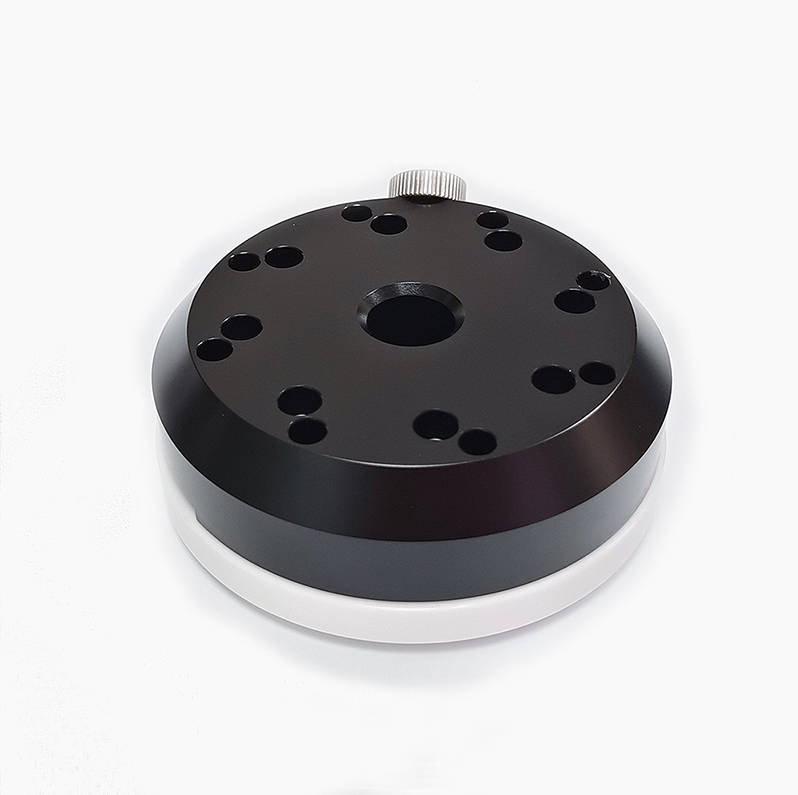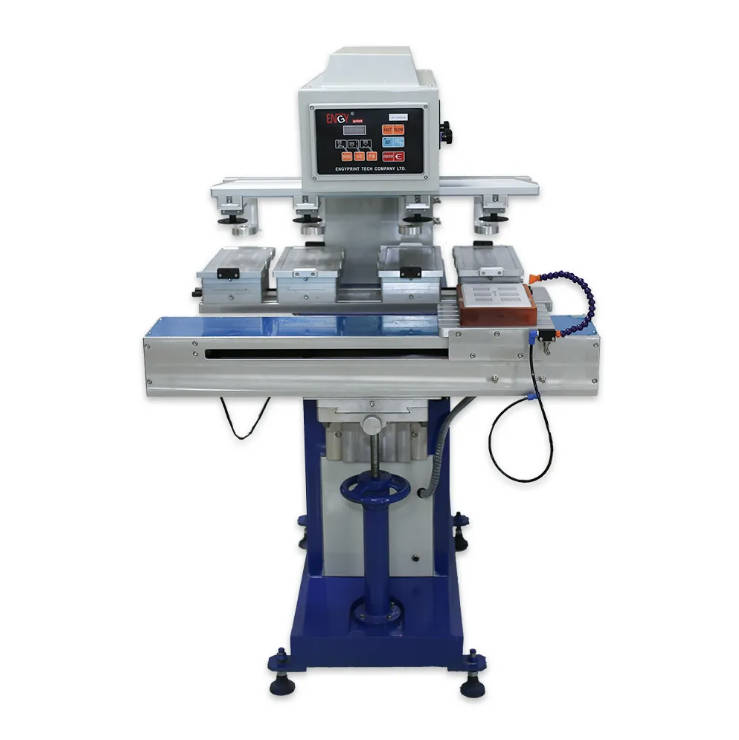Pad printing is a versatile and widely used printing technique that allows for the transfer of 2D images onto 3D objects, making it essential in industries such as consumer goods, medical devices, and promotional products. As businesses look to invest in pad printing equipment, understanding the differences between rotary and flatbed pad printing machines is crucial. This article provides a detailed comparison of these two types of Pad Printing Machines to help users make informed decisions in 2025. We will explore their functionality, applications, speed, cost, and limitations, addressing common questions along the way.

Understanding Pad Printing Machines
Pad printing involves transferring ink from a silicone pad onto a substrate, allowing for high-quality prints on irregular or curved surfaces. This technique is commonly used for printing on items like pens, mugs, medical devices, and electronics. There are two primary types of pad printing machines: rotary and flatbed. Each has unique features suited to different production needs.
Rotary Pad Printing Machines: Features and Functionality
Rotary pad printing machines are designed for high-speed, continuous printing on cylindrical or curved surfaces. They use a rotating mechanism to print 360° designs on objects like bottles, tubes, and caps.
- Mechanism: Rotary machines feature a rotary table and hermetic ink cups, enabling seamless printing on round objects.
- Key Features: These machines are often fully automated, making them ideal for large-scale production. For example, the Trans Tech Single-Head Rotary Gravure Pad Printer is known for its speed and precision.
- Advantages:
- High-speed printing: Up to 9 times faster than standard pad printers for cylindrical parts.
- Ideal for continuous, seamless designs on round objects.
- High precision for repetitive tasks.
- Limitations:
- Limited to cylindrical or slightly curved surfaces.
- Higher initial investment and setup complexity.
- Less flexible for flat or irregularly shaped objects.
Rotary machines are a top choice for businesses needing automatic pad printing machines for high-volume production.
Flatbed Pad Printing Machines: Features and Functionality
Flatbed pad printing machines are designed for printing on flat or slightly curved surfaces. They offer greater versatility and are suitable for a wide range of substrates.
- Mechanism: Flatbed machines use a stationary table and ink cups to print on various surfaces.
- Key Features: Available in manual, semi-automatic, or fully automatic configurations, these machines can handle diverse printing tasks. Inkcups is a well-known supplier of flatbed pad printing machines.
- Advantages:
- Versatility for printing on flat, curved, or uneven surfaces.
- Lower setup costs and easier maintenance.
- Ideal for short to medium production runs and intricate designs.
- Limitations:
- Slower cycle times (3-5 seconds per cycle).
- Less efficient for high-volume cylindrical printing.
- Manual loading/unloading may increase labor costs for large runs.
Flatbed machines are often more affordable, making them a popular choice for businesses concerned about pad printing machine price.
Head-to-Head Comparison: Rotary vs. Flatbed Pad Printing Machines
To help you decide which machine is right for your needs, here’s a direct comparison:
| Feature | Rotary Pad Printing Machine | Flatbed Pad Printing Machine |
| Speed | High-speed (thousands of units/hour) | Slower (3-5 seconds per cycle) |
| Substrate Compatibility | Cylindrical or round objects (e.g., bottles) | Flat, curved, or irregular surfaces (e.g., pens) |
| Print Quality | High precision for continuous patterns | Superior for complex or multi-color designs |
| Setup and Operating Costs | Higher initial investment; cost-effective for bulk | Lower initial costs; economical for small runs |
| Automation | Highly automated, reducing labor costs | Semi-automatic or manual, requiring more labor |
| Maintenance | Complex due to rotating components | Simpler and more durable |
Speed and Production Volume: Rotary machines are faster and better for large-scale production, while flatbed machines are ideal for smaller runs.- Substrate and Shape Compatibility: Rotary machines excel with cylindrical objects, whereas flatbed machines handle a variety of shapes.
- Print Quality and Detail: Flatbed machines are better for intricate designs, while rotary machines are suited for simpler, continuous patterns.
- Setup and Operating Costs: Rotary machines have higher upfront costs but are more cost-effective for high volumes. Flatbed machines are cheaper initially and better for low-volume production.
- Automation and Labor: Rotary machines are highly automated, reducing labor needs. Flatbed machines may require more manual intervention.
- Maintenance and Durability: Flatbed machines are easier to maintain, while rotary machines require more attention due to their complexity.
Applications and Industry Use Cases
- Rotary Pad Printing:
- Beverage and cosmetic industries (e.g., printing on bottles and tubes).
- High-volume promotional products (e.g., caps and cylindrical giveaways).
- Flatbed Pad Printing:
- Electronics (e.g., keyboards and control panels).
- Medical devices (e.g., syringes and catheters).
- Custom promotional items (e.g., pens and mugs).
Each machine type serves distinct industries, so understanding your product line is key to choosing the right equipment.
Key Considerations for Choosing the Right Machine
When selecting a pad printing machine, consider the following factors:
- Production Needs: High-volume production favors rotary machines, while short runs are better suited to flatbed machines.
- Substrate and Product Types: Choose rotary for cylindrical items and flatbed for diverse shapes.
- Budget and Cost Efficiency: Flatbed machines are more affordable upfront, but rotary machines offer better ROI for large orders.
- Space and Infrastructure: Rotary machines require more space due to their larger footprint.
- Skill Level and Training: Rotary machines may require more training due to their automation features.
For businesses looking to purchase, it’s advisable to consult pad printing machine suppliers like Inkcups or Comec Italia for tailored advice.
Common User Questions Answered
- Which machine is faster? Rotary machines are faster for cylindrical objects, while flatbed machines are slower but more versatile.
- Can flatbed machines print on cylindrical objects? Yes, with rotary attachments, but they are slower and cannot handle tapered objects.
- What are the cost differences? Flatbed machines are generally cheaper upfront; rotary machines are more cost-effective for high volumes.
- How do I maintain these machines? Flatbed machines require less maintenance; rotary machines need regular checks on rotating components.
- Which is better for small businesses? Flatbed machines are often more suitable due to lower costs and versatility.
Trends and Innovations in Pad Printing for 2025
As we move into 2025, pad printing technology continues to evolve:
- Automation: Both rotary and flatbed machines are becoming more automated, reducing labor costs.
- Eco-Friendly Inks: UV curing and sustainable inks are gaining popularity.
- Smart Controls: IoT integration allows for real-time monitoring and improved efficiency.
- Hybrid Systems: New machines combine rotary and flatbed capabilities for greater flexibility.
These innovations are making pad printing more efficient and accessible, benefiting both large manufacturers and small businesses.
Conclusion
Choosing between rotary and flatbed pad printing machines depends on your specific needs. Rotary machines are ideal for high-speed, cylindrical printing, while flatbed machines offer versatility for various shapes and short runs. Evaluate your production volume, substrate types, and budget before making a decision. Consulting with pad printing machine suppliers and requesting demos can help ensure you select the best equipment for your business.





